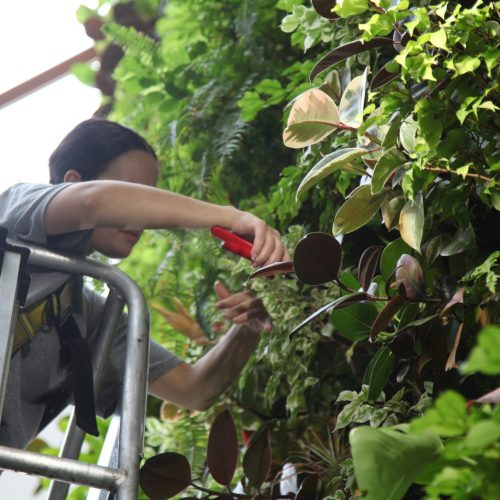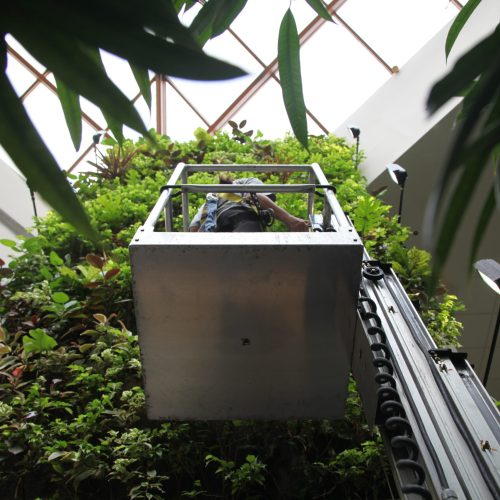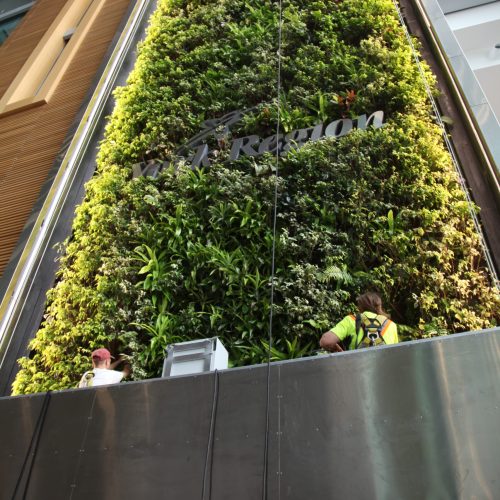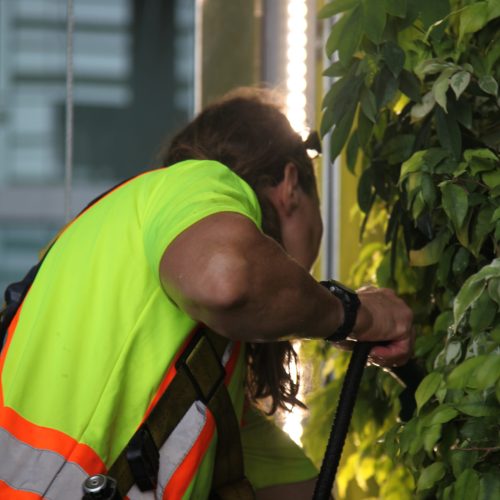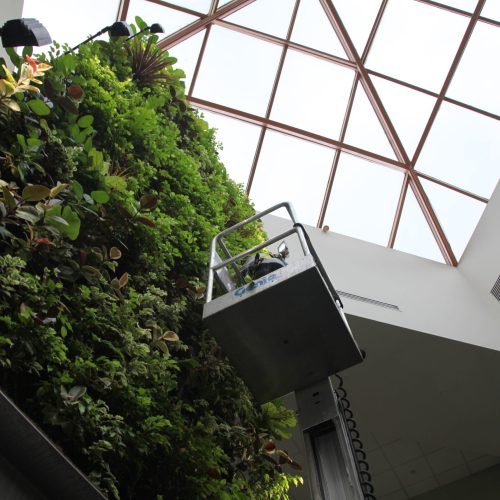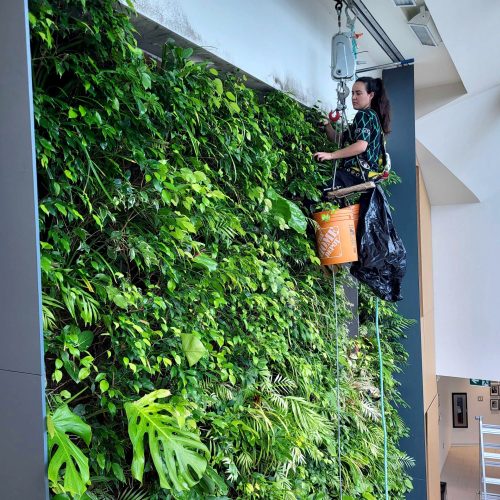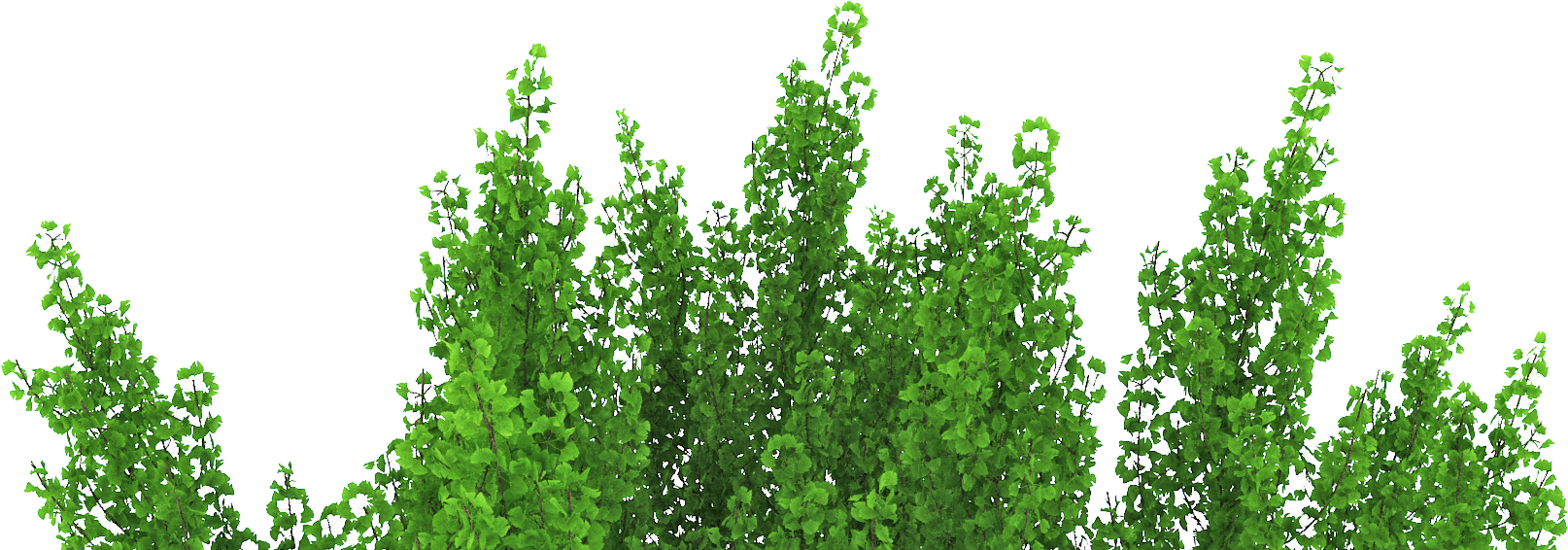Living walls need nurturing.
All systems, custom, modular, mobile or fixed to a wall will need tending. Proactive and regular maintenance doesn’t simply ensure healthy plants, it reduces the risk of clogged drains and water retention that have the potential to be costly down the road.
If it’s a geoponic based system, the soil will need to be checked and fertilized as necessary. Manual or automatic irrigation systems need to be monitored to make sure that the plants are not being over or under saturated. Faulty irrigation can also affect fertigation, which is the process of nutrients being delivered via an irrigation system.
Our maintenance teams are trained to recognize pest manifestations that can lead to plant disease. Caught early we can provide treatment options; delayed intervention will result in plant loss along with the benefits they provide.
The seeds we sow reap rewards.
For seamless maintenance here’s a few things to consider.
- We will need access to the building, and it may cause temporary disruption to the occupants. Our crews are always professional and proficient and often occupants stop by to inquire about what we are up to.
- You should budget maintenance as it ensures that the wall thrives.
- If there is a potential to expand the coverage area over time it is best to install a modular system.
- The plant varietals used in a system will predetermine whether we can offer a low to high maintenance plan.
- Use an expert. Vertical growing is a specialized skill and working at heights requires safety equipment and regulated measures to be in place.
- Your living walls will be healthy for years to come.
- Occupants living, working or visiting the space will feel good surrounded by nature.
- Protects the original cost and time investment.
- Eliminates the potential for costly future repairs due to neglect.
- Ensures that all environmental benefits are sustained.
Why are my plants dying, I water them every week?
Plants are often overwatered causing them to experience a “drowning” effect. A moisture meter can help determine if the soil needs to be watered. The preference is to soak the plants in the sink and then let the soil dry down. The soil should be dry for the first top 1 to 2 inches before another soaking. The dry down period creates air pockets where the new roots can expand.
Why do my plants have bugs?
That white cotton fluff is called mealybug, and the sticky residue on plant leaves is called honeydew. The sticky parts are due to pests chewing through the leaf cuticle to get to the leaf juice. When plants are stressed for reasons like too little or too much light, water, cold or hot temperatures, this invites pests to take advantage of their weakened state.
Once the stressor has been identified and addressed, the pests can be managed with washing the plant, once a week for a 3-week cycle. Spray the entire plant, top and bottom with a diluted soap solution of 2 teaspoons of non-phosphate soap to one litre water. Leave the solution on the foliage for 10 to 20 minutes. Thoroughly rinse with water. Repeat this weekly for 3 weeks and then continue monitoring for any re-appearance of the pests. Remember to sterilize tools and pots, and quarantine plants once they’ve become pesty, so they don’t infect other areas.
How do I keep my plant from growing too big? It’s so tall and thin that I must tie it up to keep it from falling over.
Remove the terminal buds. These are located at the top of the stem where most growth happens. This should keep the plant bushy and manageable. You remove the terminal buds by “pinching” the end of a plant just above the node on the stem where the leaves are attached. When you remove the end set of buds your plant grows two new branches or lateral stems resulting in more leaves and flowers.
How do I know that the lighting is sufficient?
If you use supplemental lighting the grow light bulb could emit a “light” signal, but it may not be providing the right amount of light for your plants. The lighting needs for houseplants are quite different from vegetables or other production plants.

